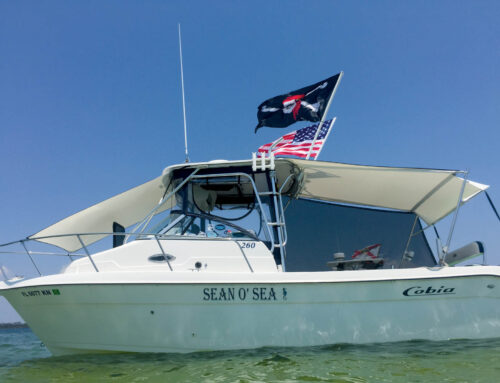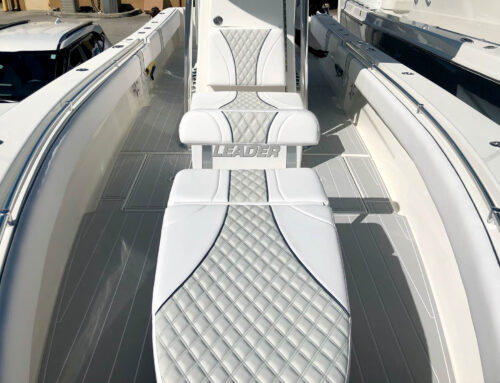Technology is no longer the future—it’s now
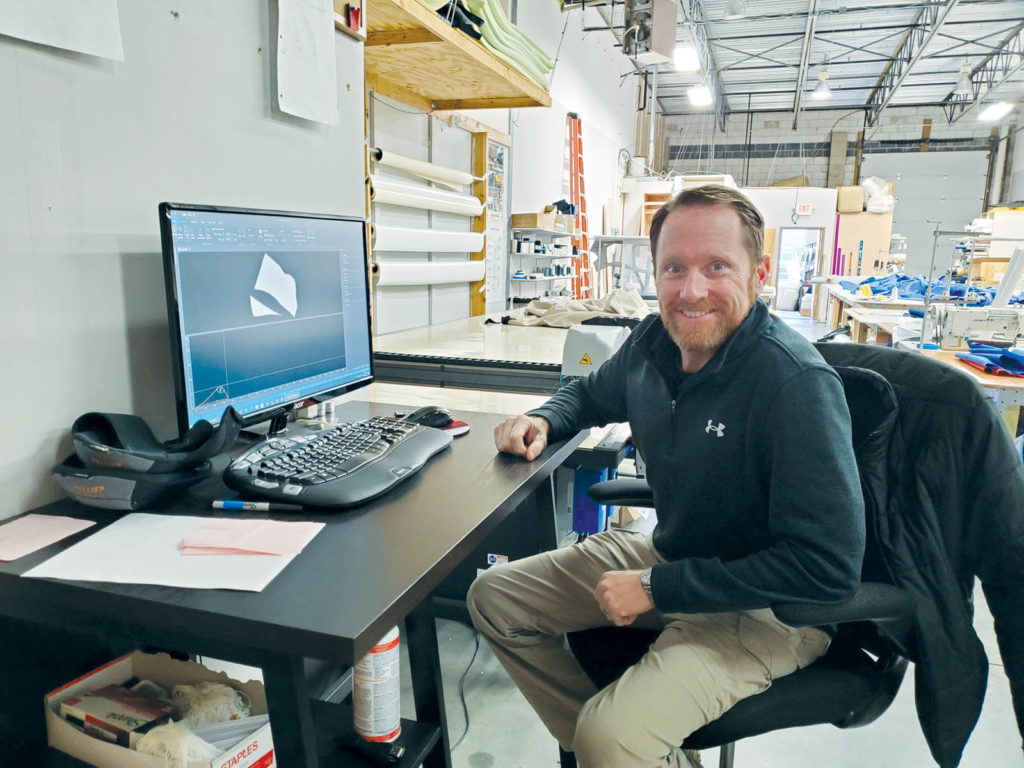
By Darren Arthur
So, what is all this buzz about technology within the marine canvas industry? Some use it, some don’t, but within the next few years most of us will. Tech is having a big impact on our industry, and you should be aware of how it impacts you.
Past, present, future
Looking back just seven years ago to the national Marine Fabricators Association Conference, a question was asked about how many shops currently use CAD software in their businesses. There were only a few raised hands. Last year, when that same question was asked, about half the hands in the room went up.
Tech is here, and it is becoming more obvious that over the next decade, it will be more difficult to compete against shops that are using tech. Yes, there will always be room for a shop that chooses not to use CAD software. However, the advantages of CAD software and automated cutting tables along with digital measuring will inevitably overtake our industry.
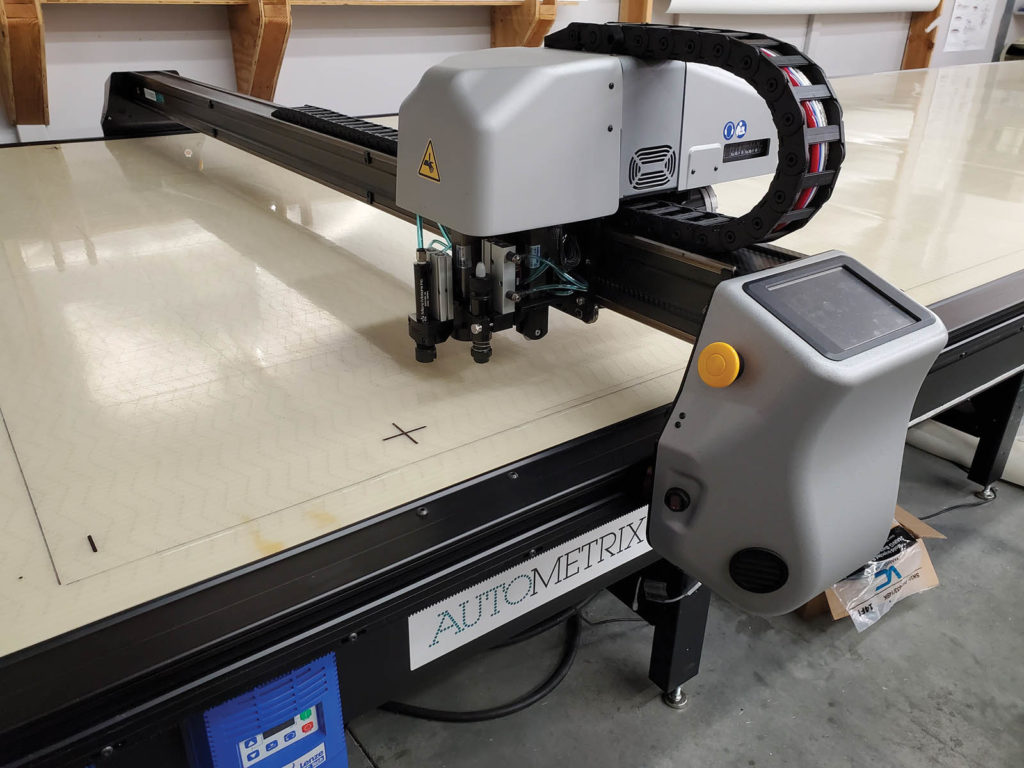
How to get started
The question many have is, What is the best way to get started? What purchase do I make first? Some have concerns about the cost, but we are all in business, and businesses need to invest to stay current and competitive—whether it be on a $200 hand tool or a cutting table that can range in cost from $50,000 to $100,000. I have found that the benefits of the investment far outweigh the costs. This includes things like being able to measure more in a day digitally than I would be able to pattern, with little or no worry about the wind ripping my pattens apart.
Sure, more time is spent in the shop doing CAD design, but that seat is a lot more comfortable than risking safety by patterning off the side of a large boat. The overall time spent to prep and cut a job is less than I would ever be able to do using traditional methods. “Yes,” you say, “but I can pattern, cut, sew and install a console cover faster than that.” That may be true; however, that is a narrow perspective on what the technology can really do for you in the long term.
I receive a couple of calls monthly now for work we have done previously, and the customer now wants to replace it or has lost a piece. As long as you have a good file with notes, you can produce that product again in far less time, and you can charge the same or the current rate. Over time, this will be very profitable repeat business, but in order to produce the product again, you will need to have a good process. This brings us back to that first question: How to get started?
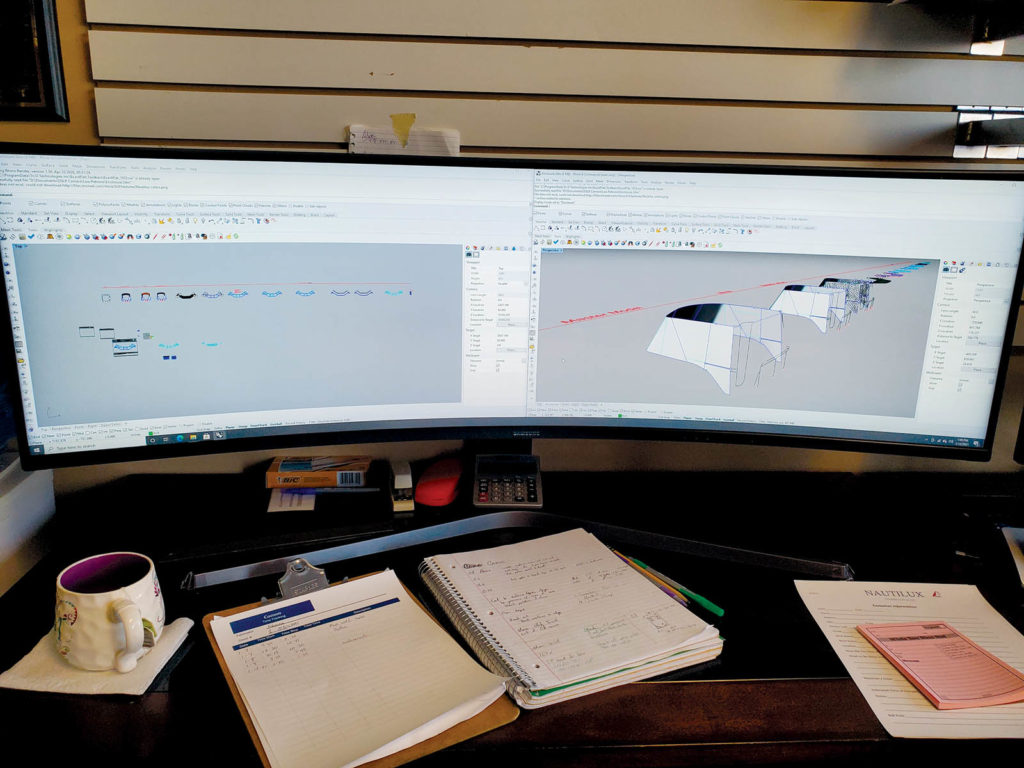
SOPs are your business
The best way to get started is to begin developing excellent “standard operating procedures” (SOPs). The products you make should be standardized as much as possible. Without this in place, you will have a huge struggle implementing CAD and automated cutting into your business. You must spell out and document everything you do. What pocket size do you use for your biminis? How do you trim out your enclosures? How do you reinforce? Where do you start your zippers? These are just a few of the things to think about. The sooner you start this process and actually document it, the better off you will be whether you introduce tech into your business or not.
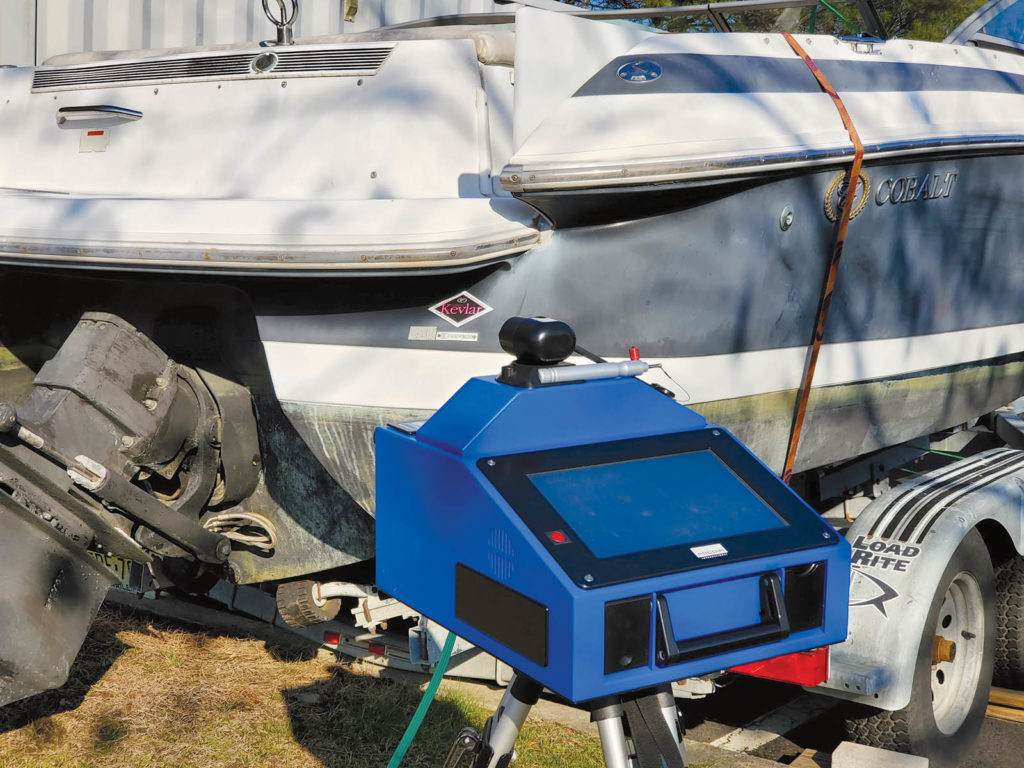
Software is next
If you decide to introduce tech, a good next step is using CAD software. I use Rhino for all CAD design and find that most in our industry are doing the same. There are great tutorials that help you start learning the platform and functions of the software, but nothing speeds learning better than actually struggling through a job and making mistakes. Isn’t that how many of us learned to be where we are now doing it the traditional way?
Speaking of that, traditional patterning and fitting is an integral part of CAD design. Sure, you can create a fantastic looking 3D model of an enclosure or full cover, but is that how the material will really react? The fundamentals of material and how it behaves in the real world will help you create a good 3D model. I think we can all agree that the biggest learning curve will be using CAD.
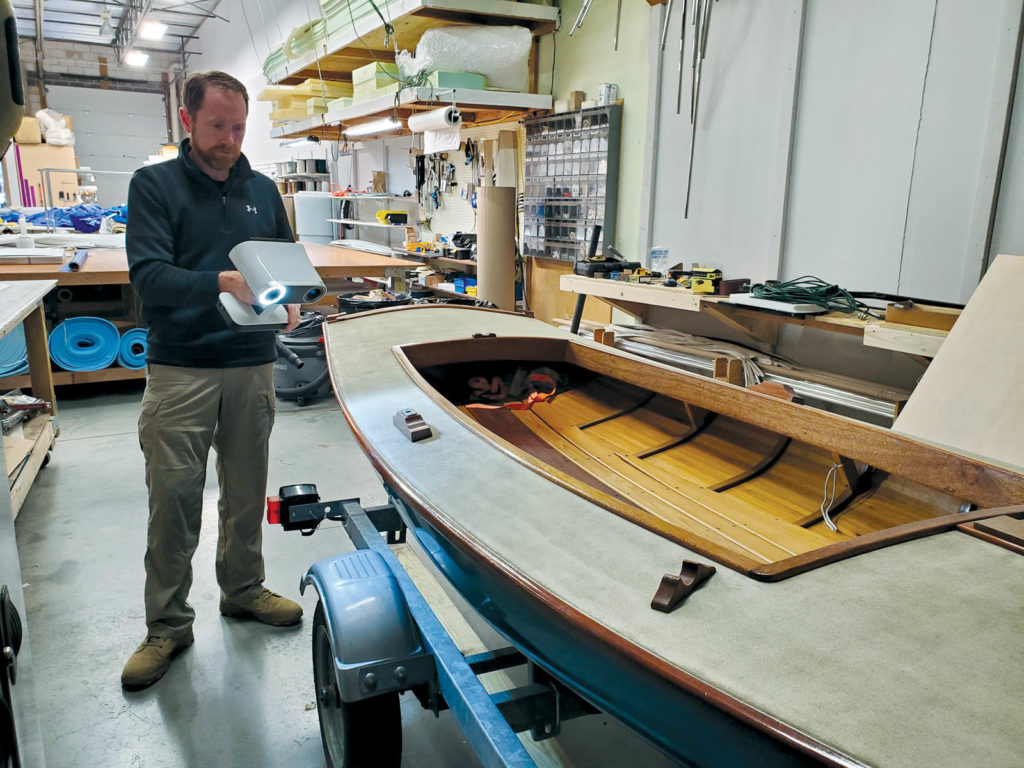
Back to school
Most of us have no formal tech training and need to start at the beginning. It can be overwhelming to process all the “new stuff” out there and decide what to purchase. After standardizing your processes and learning the basics of Rhino, I recommend getting yourself a photogrammetry system and cutter. Purchase what you will need five or 10 years from now.
For those not familiar with photogrammetry, the simple explanation is that you pattern like you would anything else; then you lay the patterns out at the shop. If you have a cutter, you can use the vacuum on the table to suck the patterns flat. A standard camera mounted in the ceiling will then take a picture. Using a software application called PhotoModeler combined with Rhino, you simply trace over your lines to create a digital file of your pattern. From here you clean up your lines, add seam allowances, labels, match marks, reinforcements or any other components you need to cut. The pieces are then grouped together in what is called nesting for best use of material and sent over to the table to be cut.
Several benefits exist here. We have found that since the integration of a cutting table, our material usage had been reduced by 32 percent. No more estimated yardage to order with some left over or underordered with secondary shipping costs. Also, the cutting requirement is now dependent on the cutter. The job description is simplified for your employees, and the quality increases along with your consistency. This ability to produce more product with fewer people is now the reality all while your profit margin increases.
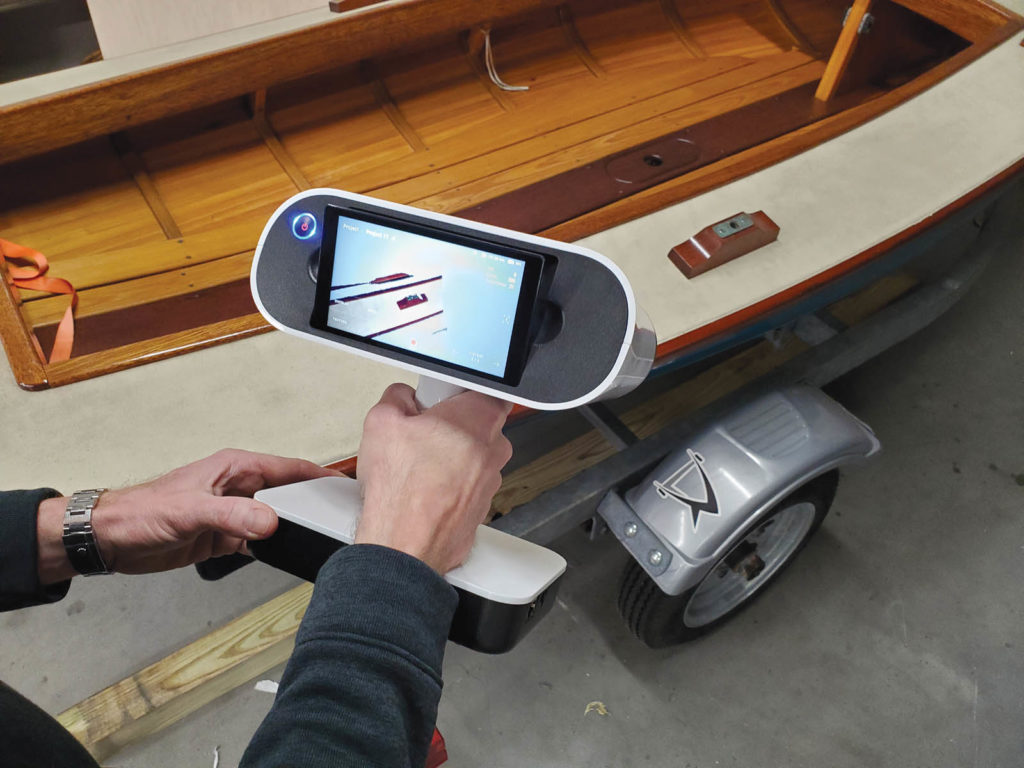
2D before 3D
There are other tools that you can look forward to in the future such as a Proliner or scanner, but don’t go too fast. I can’t stress this enough. Learn 2D first; then move into 3D. Those of you moving into this 3D category, my advice is to get your checklists in order. You don’t have a pattern to write on anymore; therefore, you need to document and check things off. I look at it like a series of questions that need to be answered such as, What type of track, snap type, frame diameter, cutouts and special zip start locations? These are things that also deviate from your standard process.
Adapting tech into your shop and becoming proficient does not happen overnight, and you will have some frustrating moments. It’s a big change, but looking back, I can’t imagine returning to the “old way” as I call it. It’s not a bad way, and it got us to where we are today. But now is the time to be open-minded to new tech or you might get left behind.
Darren Arthur, owner of Nautilux Custom Canvas, is based in New Jersey where he operates a 19-year-old business that began in his basement. His focus is on incorporating and developing technology standards for the industry while maintaining the craft. He has a background in engineering and has been in the marine industry for 26 years. He is currently the chair of the MFA Advisory Board.
 TEXTILES.ORG
TEXTILES.ORG 


